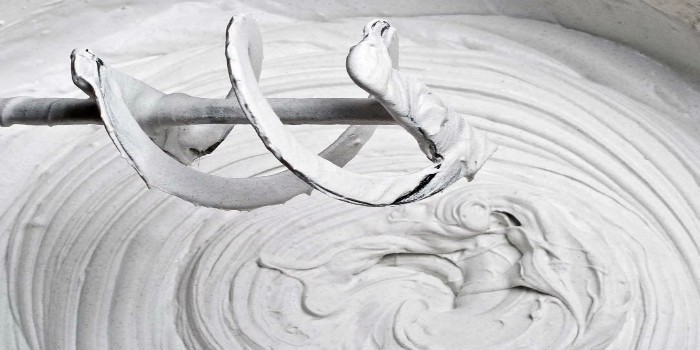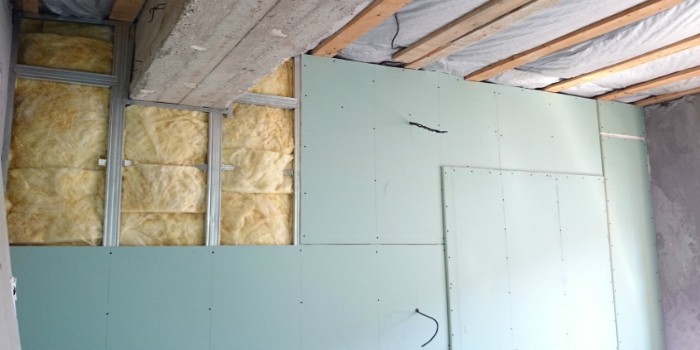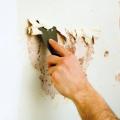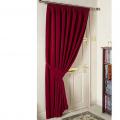Alignment of walls in the apartment and house - the choice of materials and mixtures, technology under wallpaper or painting
The mandatory stage before applying any coverage in the apartment (wallpapers, paints, tiles) - alignment of walls with putty or plaster. The future appearance will depend on this, the life of the applied coating (especially in the case of a tile). Pre-invariable surfaces with time can crack, disrupt the integrity and aesthetics of the applied coating. You can make a smooth surface using plaster and putty, which are distinguished by their structure and functional purpose.
What is wall alignment
Any repairs associated with the replacement or sticking of wallpapers, applying paint, implies a mandatory preliminary procedure - surface preparation. This process can be carried out as specialists in finishing work, as well as on their own. Before you start, you need to explore the entire area of \u200b\u200bthe room, determine the scale of all irregularities, their size to plan the future front of the work.
The irregularities and cracks are visible to the naked eye, they are plotted by a pre-prepared solution. To estimate vertical defects, a laser or water level is used. Such a process helps to more accurately determine the size of the curvature of the damage. Based on the size of the existing defects, deviations of the surface irregularities used for this materials, distinguish several methods:
- Raw way. It implies the use of special building mixtures, such as plaster and putty. It is used in the drops of uneven surfaces in the amount of 30-50 mm, filling the holes and smoothing the irregularity with the solution.
- A dry way implies the installation of auxiliary structures, such as plasterboard. This is a more labor-intensive method, as it requires a preliminary installation of the frame and fixing the plasterboard sheets on it.
Materials
Any finishing works require special materials without which it is not necessary. You need the following materials:
- brush;
- dry building mixes: plaster, putty, primer pr.;
- cheap container for breeding mortars, which will be equalized by the walls;
- a painting mesh can be metallic, plastic or fiberglass;
- electric mixer to avoid mixing mortar into manual;
- a plastering lighthouse made of metal as a reference guide for plastering;
- mechanized (machine) plaster for large rooms;
- sheets of plasterboard, wooden or metal panels.
Tool
Preparation For subsequent coating work includes several step-by-step stages that use different tools:
- brushes, rollers of different sizes for applying primer and other mixes;
- spatulas of different lengths and widths, as equalizers for applying construction material, smoothing, surface processing in different places;
- trowel and plastering rule for synchronous application, removing the excess layer of the mixture;
- specialized Mechanical, Electric Machines for Mixing, If Building Mixes need to be prepared for a large front of work;
- special materials for stripping and sanding surface.
What the walls are leveling
Any specialist in finishing work must clearly know what the walls are aligned. Such work is carried out with the help of special mixtures, panels from a different material. In order to correctly choose the necessary material, it is necessary to clearly understand, in which case for what endful goals it is intended.
Mixes
Building materials manufacturers produce a variety of solutions for finishing, which have different composition and properties. The main mixtures include:
- Cement. They contain small, medium fractions of sand and cement. Some mixtures may contain lime to increase plastic plaster. In this connection, cement mixtures distinguish between two types: cement-sand and cement-lime. The first type is less costly for the price, it differs in the content of sand of various fractions: larger - for draft and coarse works, small - for finishing finishing finishes. Such mixtures may have some disadvantages associated with crackling, drying duration and poor clutch with some materials, such as concrete. Cement-lime mixes are considered more versatile.
- Based on plaster. Such mixtures are very popular with painting works. Alignment of walls by plaster makes it possible to apply a wide layer, which has good plasticity, quickly dries, has high noise insulating and thermal insulation properties. There are special gypsum mixtures of Rotband and Rothgipses that contain special additives that increase adhesion.
- The heat-saving dry mixes have a cement-lime base, which is modified by special additives in the form of polystyrene balls and other substances. Due to this, the coated layer has a low thermal conductivity, which helps to hold heat in an apartment or house. The only inconvenience of the use of gypsum is its high water absorption, so the solution needs to be prepared in small portions.
- Based on clay. Rove the surface with clay plasters is an old way that was used to finish houses with the subsequent application of whitening from chalk or lime. But some designers are resorted to the plastering due to the high ecology of the material with the additional use of wood sawdust, straw, etc. The coating adjusts the microclimate in the room.

Panels
When you need to apply a dry way to correct the curvature of the coating, with which you can fix any irregularities, use special sheets of panels. In view of a wide variety of materials, panels can be used for finishing works:
- from drywall (GLC), gypsum fiber;
- from chipboard;
- from PVC, MDF.
Methods
Regardless of which house - panel or brick, partitions in any room can have certain defects that must be eliminated before subsequent finishing works: painting, sticking wallpaper, tile masonry, etc. To do this, use mixtures (putty, plaster) and materials (Plasterboard with frame).
Plaster
Stacking the surface is the implementation of the main draft finishing works to correct its irregularities. To determine the gypsum plaster, for the beginning, it is prepared for its surface: they remove the old coating, cleaned with roughness, if necessary, operate with primer. Then the dry plaster mixture is bred in water and apply it with the help of a trowel, smoothed the spatula and remove the surplus by the rule. Sometimes beacons can be used to apply the layer application.
By Mayakom
To ensure the maximum correctness of the correction of surface defects, lighthouses are used. Metal structures are exhibited from corners in a vertical position. They are fixed with self-drawers and are located at a distance smaller from the length of the rules by 10 cm. After even fixing the beacon profiles, special cords are stretched on the thickness of the future layer. Then begin to apply a plaster layer between the installed markups.
Pluckle
It is known that the alignment of the putty is the final stage of smoothing irregularities before applying the decorative coating. This procedure is mainly possible after plastering. First prepare the surface, the primer layer is applied, then the suction solution is breed and proceed to operation. With the help of two spatulas, the mixture is applied, clean up too much and smoothed to a smooth layer.
Plasterboard with carcass
This technology is the installation of plasterboard profiles to be set on special support guides. The frame can be made of metal or wooden bars. More stable will be the design of a metal frame. The main drawback of the alignment of plasterboard with a frame is to eat the space on the thickness of the drywall profile.

How to align the walls
Considering all the ways to eliminate uneven defects, each option has its advantages and disadvantages. To correctly align the walls, you need to understand what conditions they are. For example, for the room with a possible appearance of moisture. In the bathroom or kitchen, alignment is best carried out using cement solutions. Gypsum mixes are perfectly suitable for bedrooms and living rooms - they support the microclimate in the room.
Depending on the scale of irregularities and their material, mixtures of different composition can be used. Universal plastering will be plastering, it falls on many materials. Absolutely any uneven surface can be aligned with the use of a plasterboard profile on a metal frame. This method allows you to create a solid foundation for plaster.
Under the wallpaper
To align the walls under the wallpaper, you can use all the above methods. Depending on the state of the irregularities themselves, it is used or the plastering method with the subsequent putty, or the installation of a plasterboard profile. For wallpapers, the splay layer can be as thin and better to apply it 1 time, without repeated double or triple layers.
In a panel house
Basically built from reinforced concrete panel houses. Not all kinds of mixtures can be applied to this material. Alignment of concrete walls using a wet method should be carried out by mixtures of plaster or cement-limestone plasters. Cement-sand mixes for such purposes are not suitable - they have a bad adhesion ability to concrete.
Very curved surfaces
To level the surface very curves, use the method of overlaying additional plasterboard. In such cases, flaws may have large differences or be in the form of deep holes. Alignment of walls with great curvature is impractical due to a large amount of consumables and energy efficiency.
In new building
Mostly new buildings are now built from foam concrete blocks. When they are installed, the partition of the rooms visually has a smooth surface. Only with more careful examination you can see the existing defects that may be insignificant. Alignment of walls in a new building can be performed by overlapping a complete or partial layer of plaster, which are neatly collapsed with existing flaws.
In the old house
Due to the long service life in old houses, partitions may have impressive destruction that can not always be attached. To level the walls in the old house, the most efficient way will be the installation of drywall. This will help maximize the existing irregularities, holistically strengthen the surface, thereby increasing its service life.
Work price
The cost of work in Moscow varies depending on the prestige of the organization and on the number of serviced customers. This service carry out repair companies and individuals. In more detail, how much is the service, see Table:
 Alignment of walls
Alignment of walls Curtains on the doorway
Curtains on the doorway